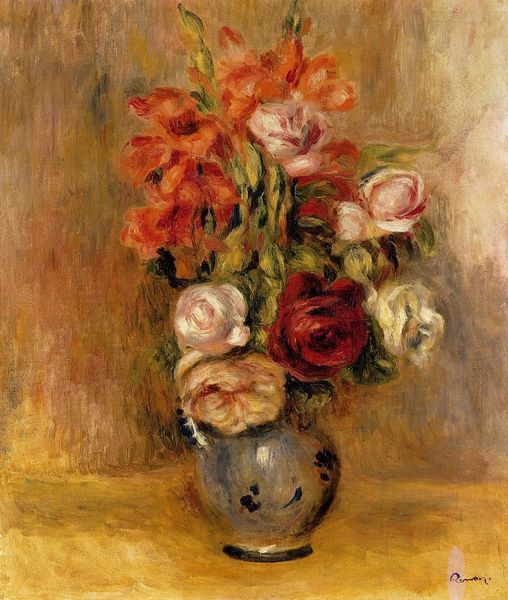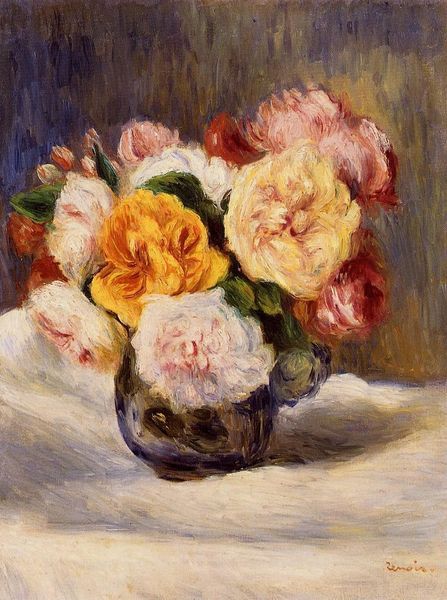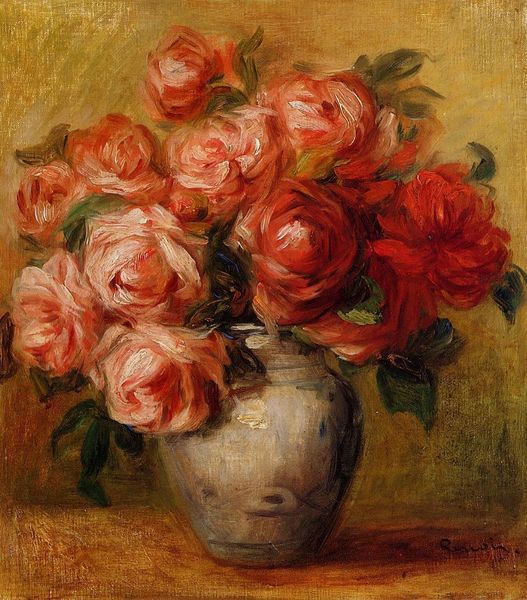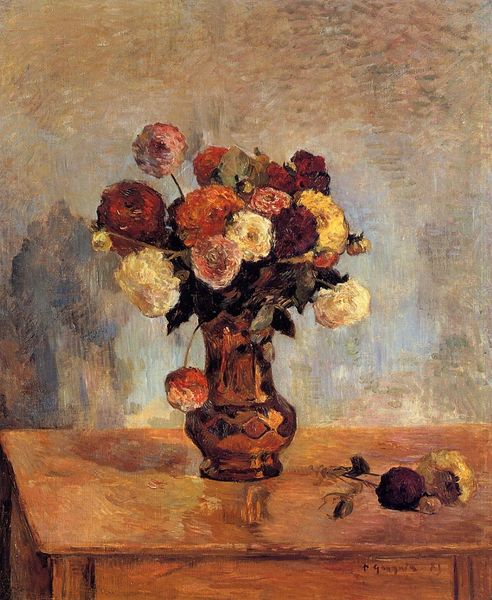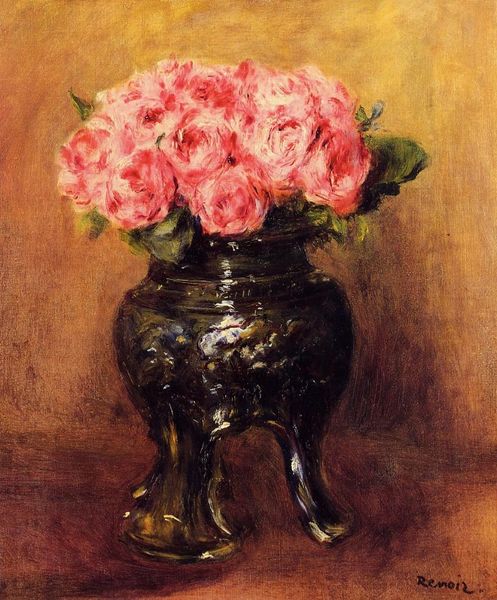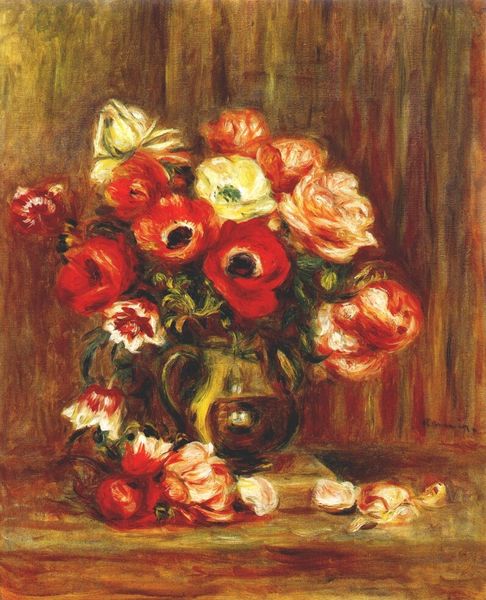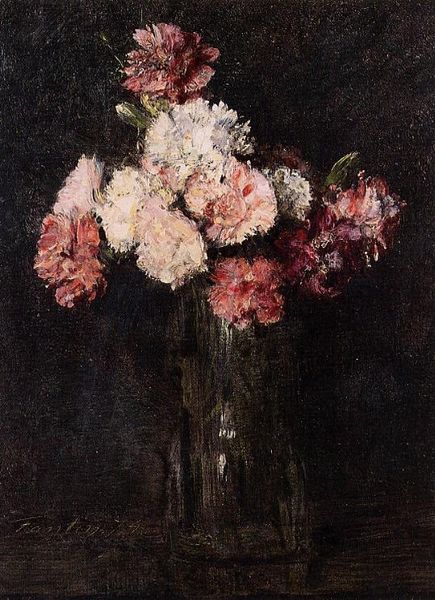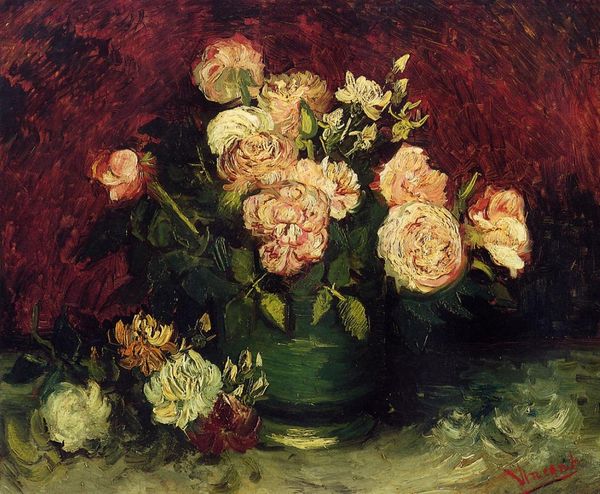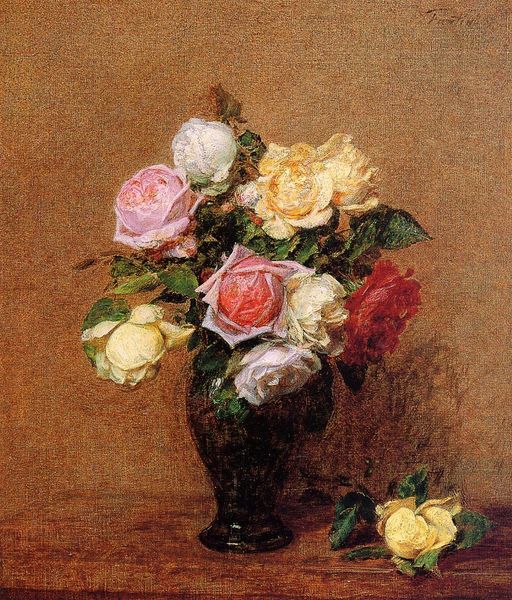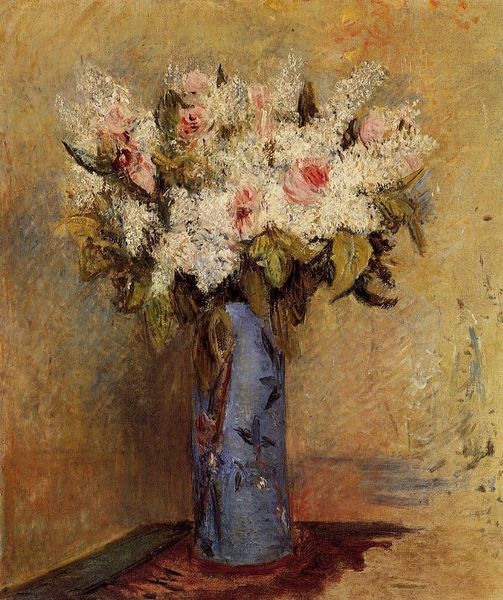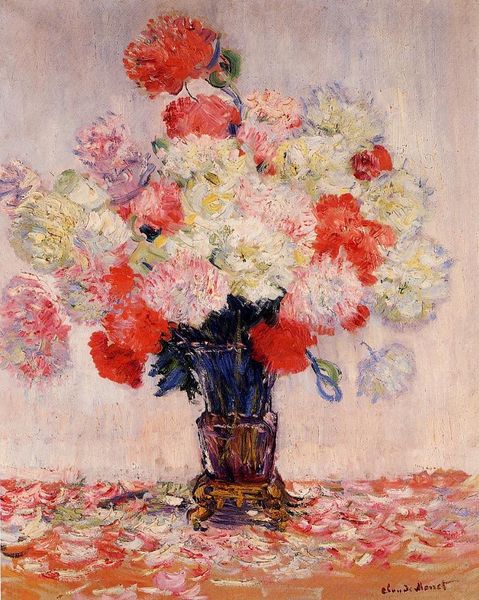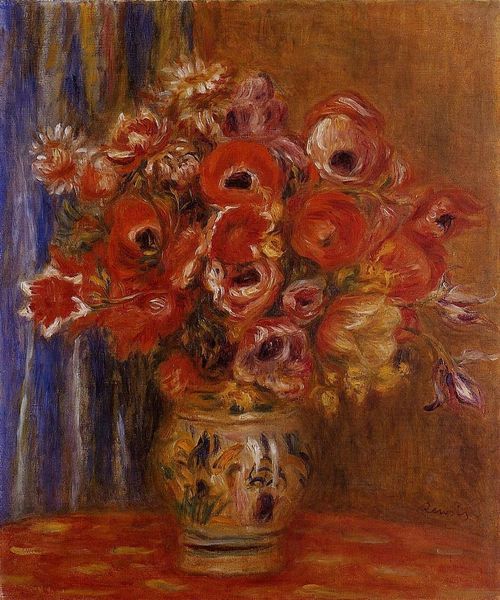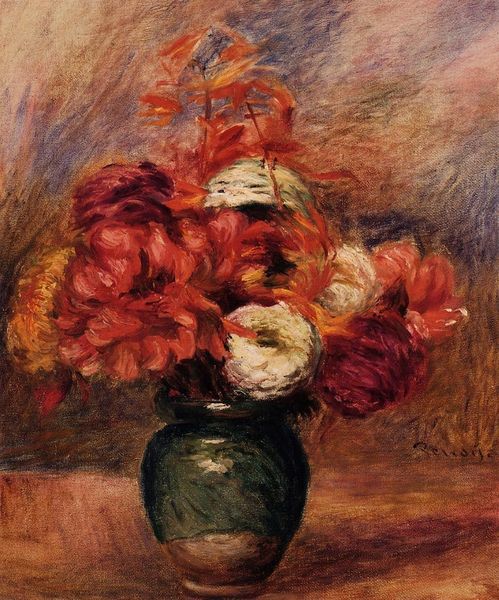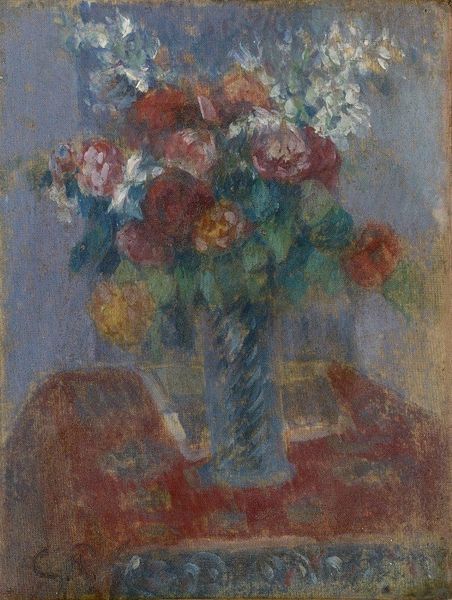
painting, oil-paint
#
still-life
#
impressionist
#
painting
#
impressionism
#
oil-paint
#
flower
#
vase
#
oil painting
#
plant
#
modernism
Copyright: Public domain
Curator: Welcome. Before us is Camille Pissarro’s "Roses in a Glass," painted in 1877. The artwork, an oil painting, currently resides in a private collection. Editor: It strikes me as being simultaneously melancholic and vibrant. The dark background pushes forward the light roses. There's a looseness that seems typical for Impressionist art but even more gestural here, almost like he was working quickly. Curator: Let's consider the process. Pissarro, known for his commitment to painting en plein air, likely didn't paint this entirely outside but drew from direct observation. The subject itself, roses, becomes significant considering the rise of bourgeois culture and its demand for these types of consumable domestic objects in art. Editor: Absolutely. The domestic sphere itself becomes a stage, almost literally propped up by that delicate glass. But to think about the materials – oil paint, the glass itself – who had access to these objects? Pissarro was part of a radical artistic shift toward representing modern life but we have to acknowledge its access was based on labor inequities of that same modern world. Curator: That perspective reframes it completely. The labor involved in the creation, the cultivation of roses, the mining and manufacturing of glass, the grinding of pigments… the entire material production supporting a "simple" still life. This wasn’t some effortless capture of beauty. Editor: Precisely. Roses also carried Victorian era coded significance around gender and romance and these beautiful fragile flowers only amplify the patriarchal social conditions of its time. Even the table’s reflective top contributes. How complicit were Impressionist paintings in crafting that lifestyle and promoting the products and ideas associated with the wealthy and middle class. Curator: By engaging with these kinds of paintings from an Activist lens you find those entry points to question everything. The painting stops being passive. Pissarro himself, though leaning towards anarchist ideals, probably didn’t recognize the extent to which his art reflected the bourgeois. Editor: I feel compelled to think more deeply about the relationship between artist, artwork, and society – it gives the viewing experience so much more urgency. Curator: Analyzing paintings like "Roses in a Glass" in this manner not only shows how process impacts perception but forces us to confront a network of connections between labor, materiality and artistry itself. Thank you.
Comments
No comments
Be the first to comment and join the conversation on the ultimate creative platform.
